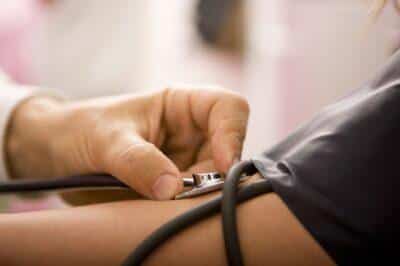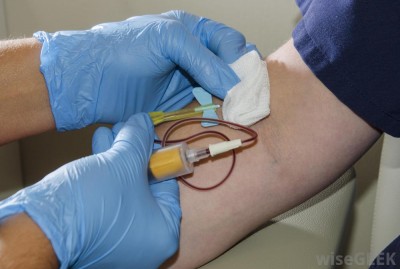
Cardiovascular disease is the most common cause of illness and death in the United States. While most people know that high cholesterol levels and high blood pressure contribute to cardiovascular disease, most people do not realize that the majority of people who experience a heart attack have normal blood pressure readings.
And according to the American Heart Association, only one-third of people suffering from a heart attack have elevated levels of cholesterol.
For decades, monitoring blood pressure and screening for cholesterol levels have been the standard way that doctors and other health care experts have evaluated patients’ risk for developing cardiovascular illness, including heart attacks. Newer tests are available which may prove to be more valuable than cholesterol and blood pressure measurement. Better testing will result in improved patient outcomes and fewer heart attacks.
Cholesterol, Triglyceride, and Blood Sugar Levels
Most heart attacks and heart failure are caused by a buildup of fat and hardening of that fat within the arteries. Cholesterol is produced by the body and obtained from eating animal fats. Some cholesterol, known as HDL cholesterol, is healthy. Low density cholesterol (LDL) is the types of cholesterol that, when out of balance, contributes to cardiovascular disease.
The Hidden Secrets Of Making Herbal Medicines…Right At Your Fingertips!
Triglycerides is a generic name for a wide range of fats in the body. Elevated triglyceride levels are implicated in blocking the arteries, too.
Diabetics are at an elevated risk for suffering from cardiovascular illness, so blood glucose monitoring should be included in an assessment for cardiac disease risk.
What causes poor circulation and heart attacks? If fat builds up in the arteries, the arteries become narrow, inflamed and inflexible. The substance formed is called plaque. High blood pressure may result from hardening of the arteries. Impaired circulation ensues throughout the body and within the circulation to the heart and lungs. Inflammation is a key factor in the formation of many types of illnesses, including cardiovascular disease.
A piece of plaque may break off and lodge in the heart, causing a heart attack, or in the brain, causing a stroke. A clot may form within the heart itself, creating a myocardial infarction, commonly referred to as a heart attack. Tissues within the part of the heart which is blocked die, and the heart weakens. Restoration of the cardiopulmonary circulation is essential, as is control of high blood pressure. Medications, stents and advanced surgical procedures may be needed in addition to rest for the heart and tissue oxygenation to recur. The focus of rapid treatment after a heart attack is to prevent additional damage to the heart, and to restore circulation and improve oxygenation of the damaged tissues.
A Different Test: CRP

A blood test called C-reactive protein, CRP, is becoming more frequently employed as a measure of heart and blood vessel health. While experts have known for years that elevations of certain types and proportions of cholesterol and high blood pressure are risk factors for the development of cardiovascular illness, the link between inflammation and cardiovascular disease was recognized more recently. People who have elevated levels of CRP have an increased risk for heart attack, stroke, sudden death and vascular disease. CRP levels indicate risk of future cardiovascular illnesses.
New All-Natural Capsule Protects You From Dangerous Toxins And Pollutants!
The optimum level of a CRP measurement is less than one. A level between one and three is considered to indicate a moderate risk. A person who has a CRP level greater than three is considered to be at high risk for the development of cardiovascular disease. (The higher the number, the more inflammation in your body.)
The CRP level is obtained via a simple, readily available blood test and should be included as a regular part of a health assessment. Weight loss, diet, exercise and medications may be used to reduce levels of CRP. Several herbal therapies may be beneficial as well.
The PLAQ Test
A newer, less frequently utilized test which may be employed to assess cardiovascular risk is known as the PLAQ test. It measures levels of the compound known as lipoprotein phospholipase A2, Lp-PLA2. Lp-PLA2 creates molecules within blood vessel walls that are more prone to the development of hardening of the arteries, atherosclerosis and plaque, the hard substance within blood vessels. People who have elevated levels of Lp-PLA2 are at risk for cardiac disease even if other risk factors, such as high cholesterol or elevated triglyceride levels, are absent. Experts believe that diet, medication, exercise and weight loss may cause a reduction in Lp-PLA2 levels, thereby reducing the risk for cardiovascular ills.
Another test, the BNP blood test, is used in people who suffer from congestive heart failure. It is a valuable test for determining if shortness of breath is due to heart or lung problems.
Have a Healthy Heart
Check with your health care provider to see what tests he or she recommends to evaluate your risks for cardiovascular disease. Exercise, stress management, a healthy diet and nurturing relationships are all part of a wellness plan to keep your heart and blood vessels healthy. These diagnostic tests are valuable; however, living a healthy lifestyle is the best key to cardiovascular health.
Which heart and blood tests do you value most? Share your health tips in the section below:











